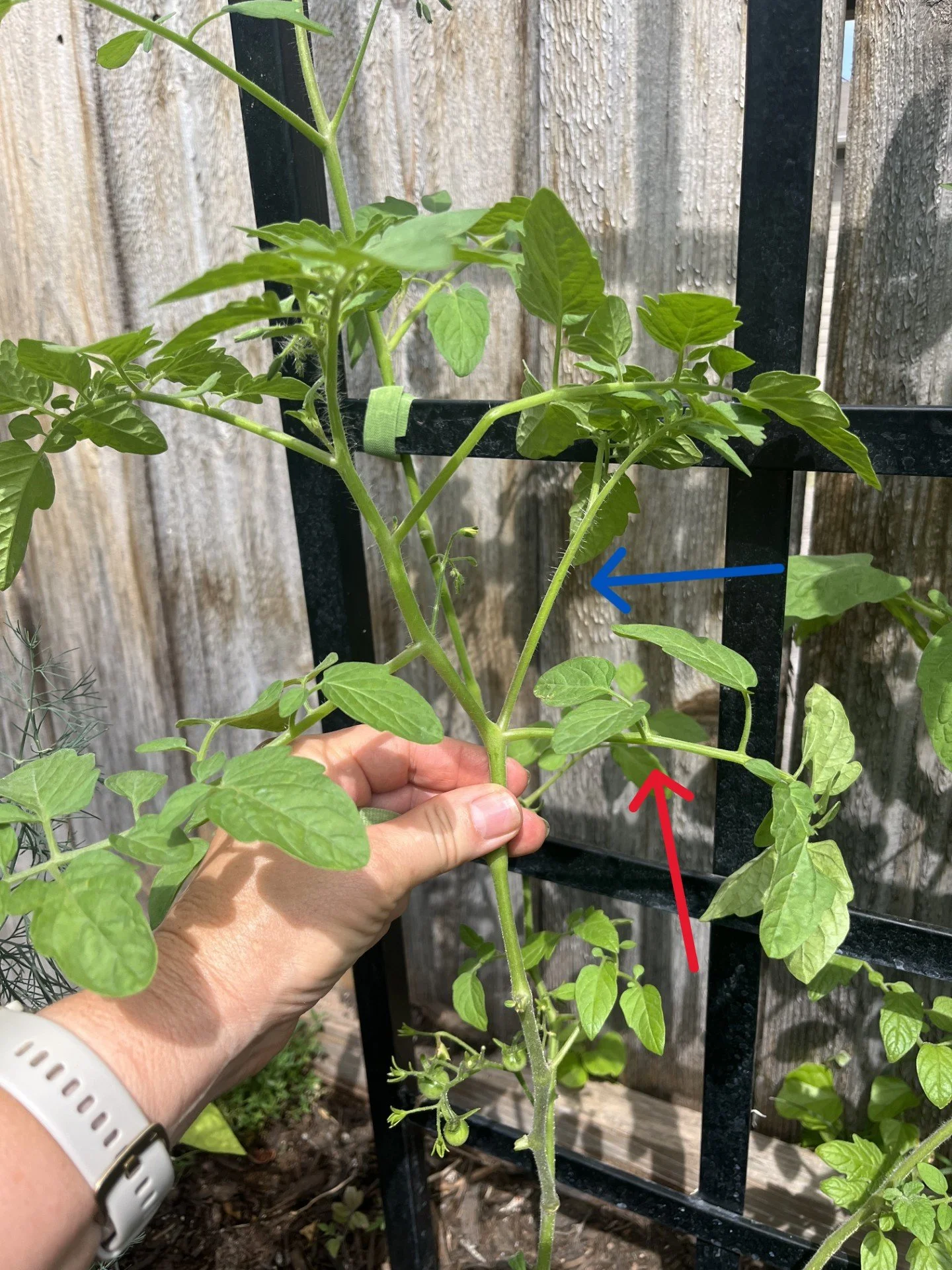Maximize Your Tomato Harvest
Tomatoes are the stars of the warm season garden, prized for their vibrant flavors and abundant yields. However, proper pruning is essential to maximizing your tomato plants' productivity and health. Let's explore the benefits and simple techniques for effective tomato pruning!
Why Prune Your Tomatoes?
Pruning tomatoes promotes:
Improved Air Circulation: Reduces the risk of fungal diseases.
Larger Fruits: Encourages plants to direct energy into fewer, larger tomatoes.
Faster Ripening: With fewer leaves and branches, sunlight reaches fruits more effectively.
Easier Maintenance and Harvesting: Makes it simpler to spot and pick ripe tomatoes.
Determinate vs. Indeterminate Tomatoes
Understanding your tomato type is critical before you even plant your tomatoes. Knowing that larger tomato varieties need maximum time in the garden during the right season is step one. They each require unique considerations for pruning:
Determinate Tomatoes:
Bush-like growth, producing fruit all at once.
Minimal pruning required—only remove lower leaves to enhance air circulation.
Indeterminate Tomatoes:
Vine-like growth, continuously producing fruit throughout the season.
Benefit greatly from regular pruning to focus energy on fruit production.
Identifying Leaf Nodes and Suckers
Leaf Node: The point where a leaf attaches to the main stem. Seen at the red arrow in the image below.
Sucker: A new shoot growing in the 'V' between the main stem and a leaf. Seen at the blue arrow in the image below.
How to Prune Your Tomatoes
Pro-tip is to prune when your plants are dry. It can be tempting to work in the garden early in the morning but try to wait until the dew has evaporated to avoid introducing or spreading any disease that might be lurking around.
Choose the Right Tools: Use sharp, clean pruners to avoid disease spread.
Start Early: Begin pruning when plants are young and regularly throughout the growing season.
Identify and Remove Suckers:
Gently pinch or snip suckers from determinate tomatoes sparingly.
Regularly remove suckers from indeterminate tomato plants to focus plant energy on fewer, higher-quality tomatoes.
Lower Leaves: Remove lower leaves touching the ground to minimize disease exposure. I like to keep the bottom 8” - 12” free of leaves, which also helps the plant to grow a strong main stem.
Special Tip for Cherry Tomatoes
Cherry tomatoes, especially indeterminate varieties, benefit from selective pruning:
Consider leaving some suckers intact. This approach results in a bushier plant, ideal for abundant cherry tomato production. I love when I stand back and see all the little red fruit covering my trellis. I also love snacking on cherry tomatoes. So maximum yield is what I am after so I leave as many of the suckers on the plant as I can!
Focus primarily on removing suckers lower on the plant and those causing crowding or shading.
Larger Tomato Varieties
For bigger, slicing tomato varieties:
Be more selective in pruning. These fruits take a lot more time to develop, basically the entity of the season and produce all at once. Leaving suckers with the thought that you can achieve more tomatoes isn’t always the best policy. They will not have the time to ripen and will only draw plant nutrients away from the first fruits of the plant.
Allow plants more time and energy to develop each fruit fully by limiting the number of stems and branches.
Final Thoughts
Regular pruning maintains healthy plants, increases yields, and enhances fruit quality. Tailor your pruning method according to the tomato variety for best results.
Happy Gardening from BrightSide Gardening!



